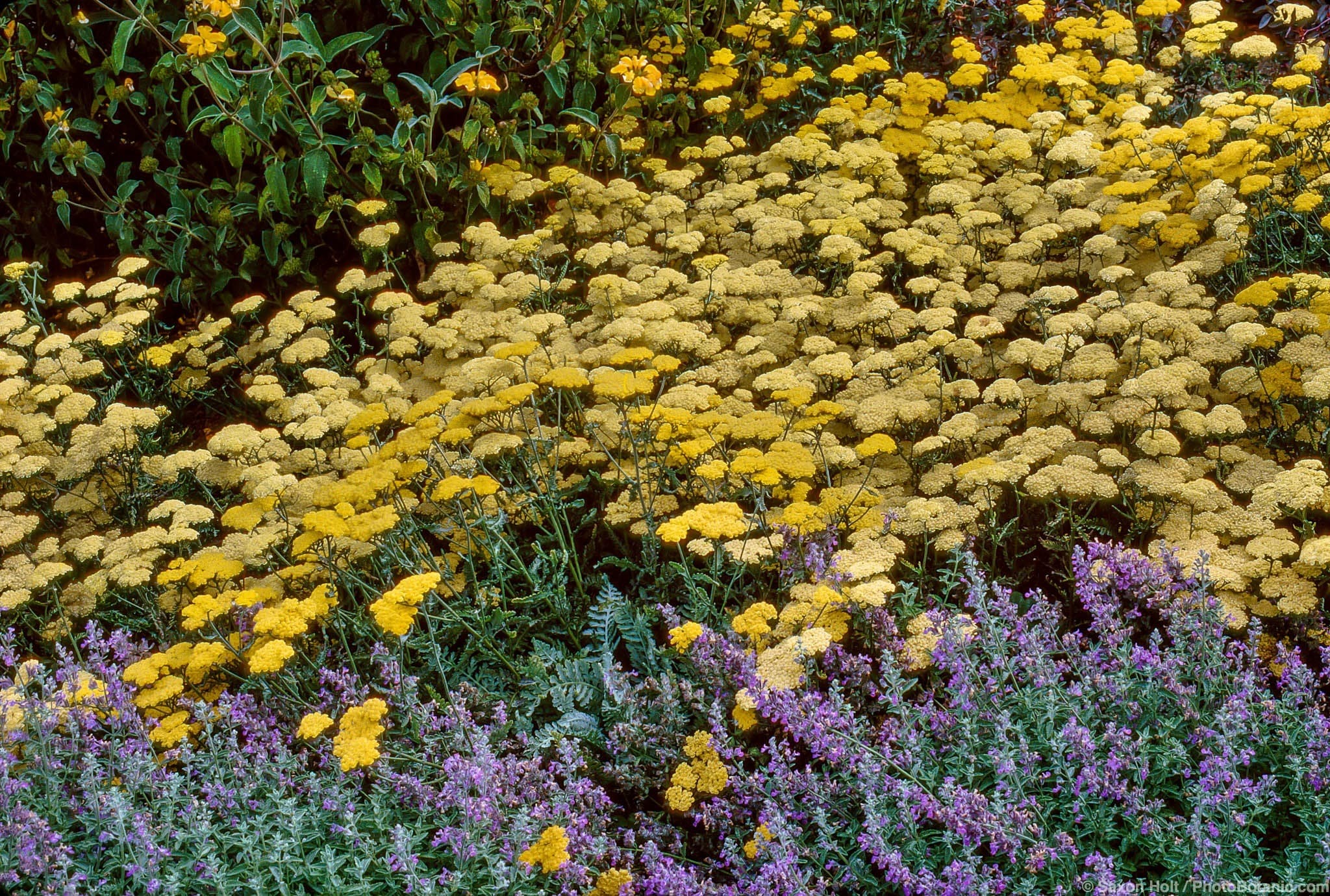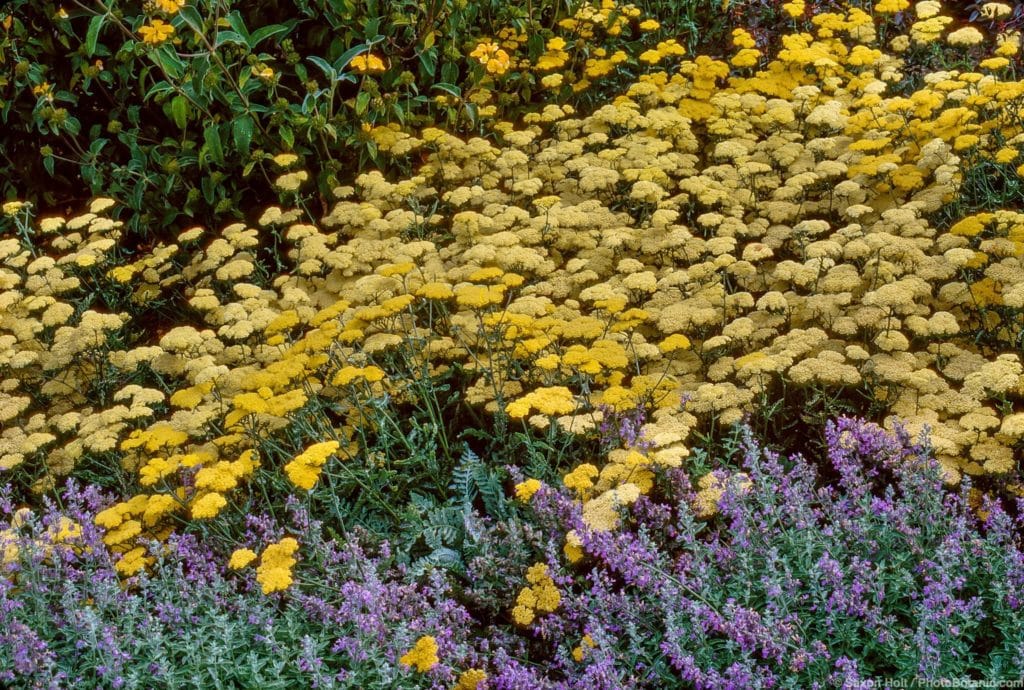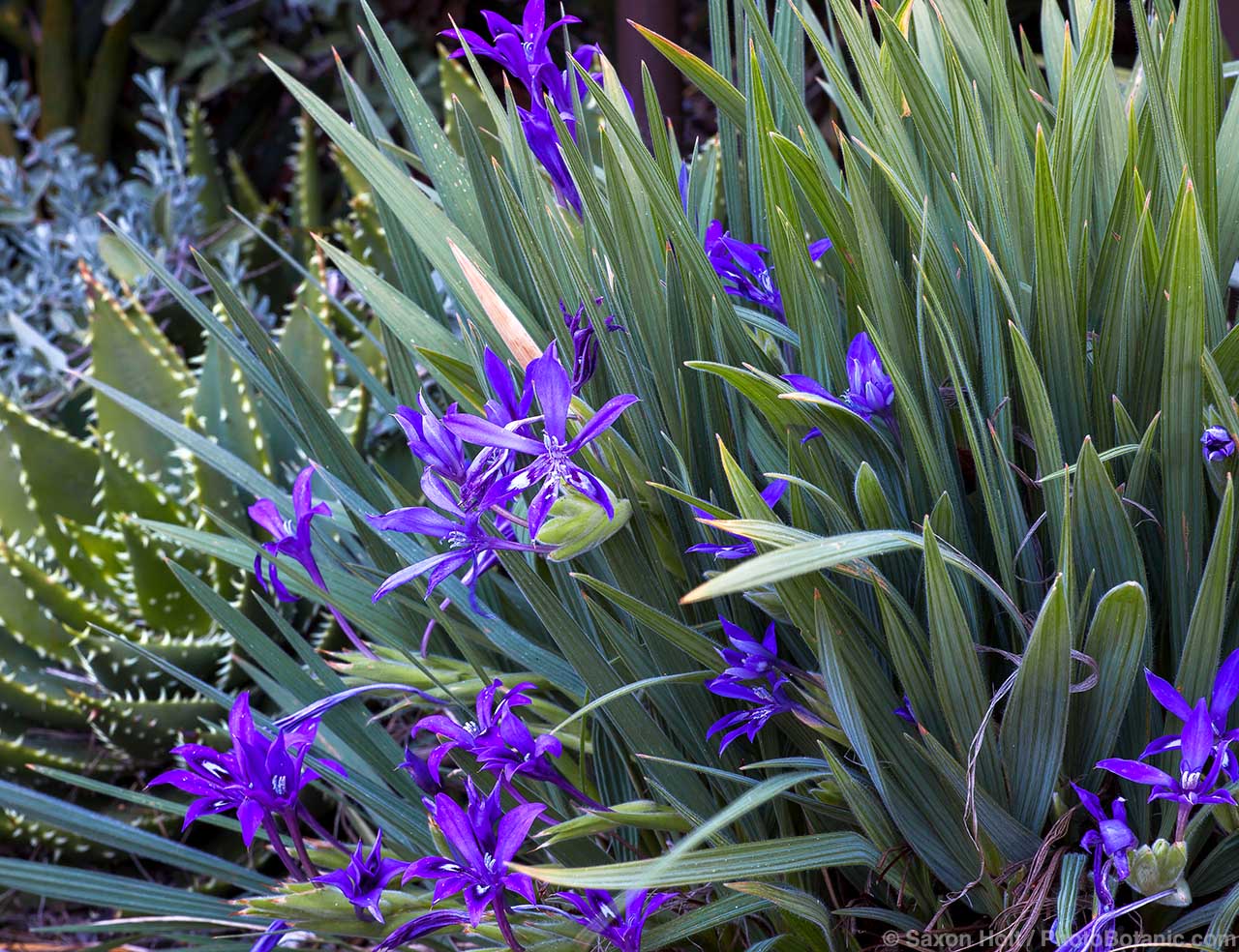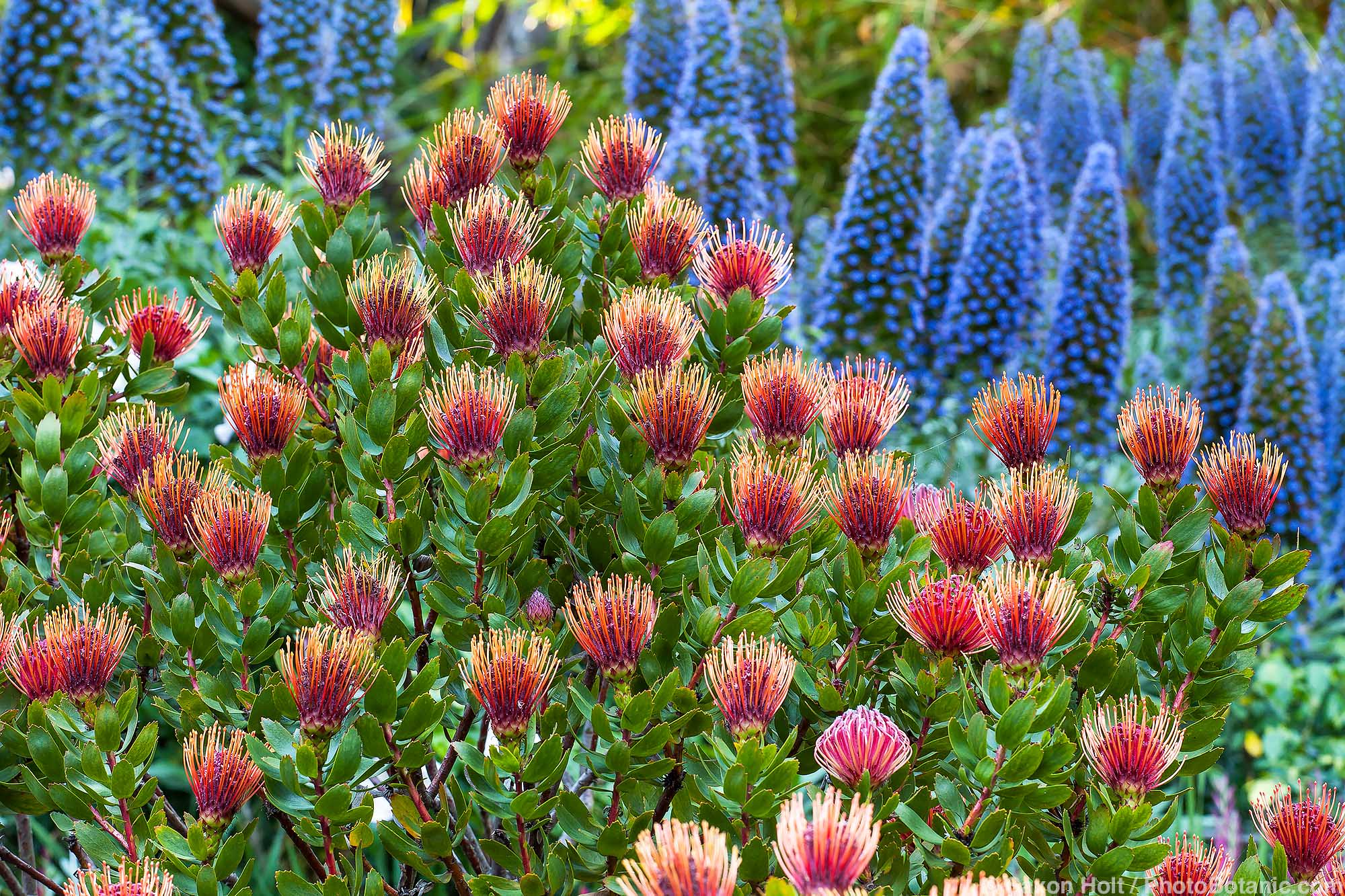Achilleas

Share This!
Achillea millefolium is a variable perennial, with one kind or another found throughout temperate regions of North America, Europe, Asia.
California has several native kinds of A. millefolium, but the most widely available and commonly planted achilleas, such as the canary yellow ‘Moonshine’ or golden yellow ‘Coronation Gold’, are named hybrids or selections of other species or of plants originating elsewhere. You may have to seek out the lovely long-lived white- to pink-flowered native achilleas at native plant sales or nurseries that specialize in California natives.

Achillea millefolium ‘Island Pink’, a selected form from the Channel Islands off the coast of California
Achilleas have lacy, finely divided, aromatic, green to gray-green leaves and small daisy-like flowers in compact flat-topped clusters. Grown in full sun, plants form dense mats six inches to a foot or so tall with masses of flowers on stalks a foot to three feet tall, showy for months in late spring through summer. Blooming can be prolonged into fall by removing spent flowers before they go to seed.
Easy, vigorous, and adaptable, achilleas spread by underground rhizomes, less so by seed, and may be considered invasive in orderly gardens. Dig deeply, divide, and replant if clumps begin to spread beyond where you want them to grow. Plants are better behaved with restricted summer watering, though occasional water will improve their appearance in inland areas.
Achilleas make a fine accent or harmonizer and are especially effective in meadow gardens with mounding or spiky grasses or mixed with other perennials. Named cultivars of Achillea millefolium come in a wide range of colors that change subtly with age. Mid-season flowers feature a pleasing combination of varying shades of white, pink, salmon, lilac, orange, crimson, or purplish red, turning buff-colored and then tawny brown as seeds mature.
Flowers are irresistible to butterflies and attractive in both fresh and dried arrangements. Birds feed on the foliage in winter. Seemingly undeterred by the rather strong fragrance of the leaves, deer often browse the flowers.
Share This!
Related Articles
By: Nora Harlow
By: Nora Harlow
By: Nora Harlow






